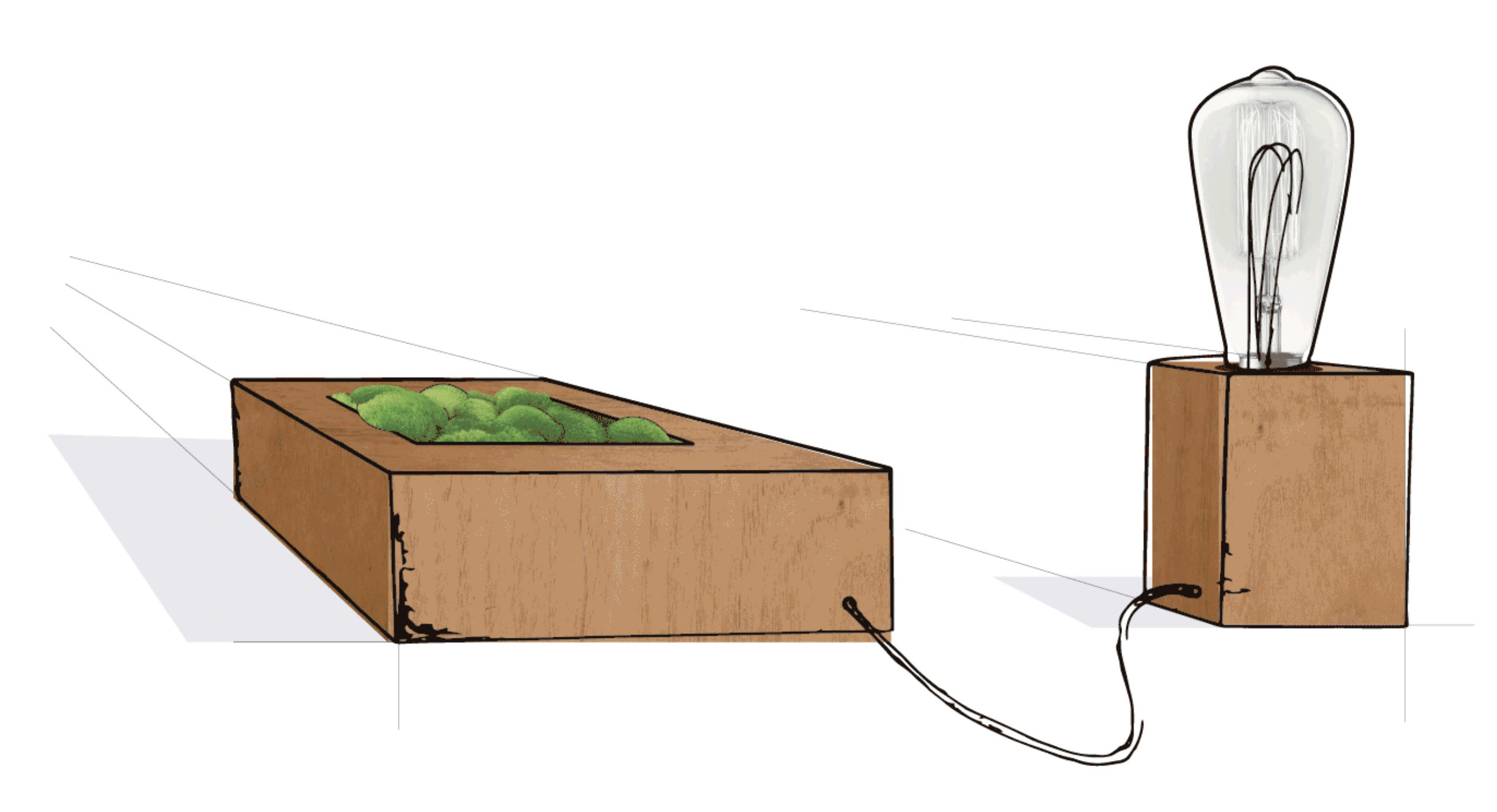︎ Project head.hands.heart
A biophilic approach to expanding the exclusivity of design to accommodate sensory processing sensitivities.
By Makenzie O’Connor ︎

The physical, human body provides an interface between the environment and the central nervous system. How environmental stimuli are processed, understood, and acted upon are determined by our perceptual systems. These systems are influenced by trauma, and as trauma is passed down through generations, I’m proposing inter-generational healing to recover the perceptual potentials of the body. In addition to the design of products & architectures, project head.hands.heart is comprised of interactions and auto theoretical writings.

Environmental stimuli / 2020
 Biophilia / 2020
Biophilia / 2020
Biophilic design utilizes tactile, auditory, and visual stimuli to provide a broader opportunity to connect, interact, and be part of the community without the pressure of normative interaction. Architecture can be a tool for building safe and self-expressive experience.

[Re]imagining household design / 2020
Only through creating spaces that facilitate feelings of visceral safety will mental health and healing be possible. In addressing inter-generational design, I’ve identified “home” as the primary space of inter-generational inheritance and connection; the home as environment and home as body. Focusing on “home” as the space of architectural intervention, I’m exploring a biophilic approach to building soft architecture that provides visceral safety through perceptual emancipation.
Design to Outcomes
Designing with materials that acknowledge and reciprocate life to outcomes of reduced self-harm...and visceral safety through perceptual emancipation.

︎
Works Cited
Acevedo, B., Aron, E., Pospos, S., & Jessen, D. (2018). The functional highly sensitive brain: a review of the brain circuits underlying sensory processing sensitivity and seemingly related disorders. Philosophical transactions of the Royal Society of London. Series B, Biological sciences, 373(1744), 20170161. doi:10.1098/ rstb.2017.0161
Ahmed, Sara. (2007). A Phenomenology of Whiteness,” Feminist Theory, vol 8.2: 149-168.
APA (American Psychological Association). (2019). Stress Effects on the Body. [Online]. Available: https://www.apa.org/ helpcenter/stress/effects-endocrine#menu. [Accessed: 05- Dec- 2019].
Berger, John. (1972). Ways of Seeing. London: Penguin
Browning WD, Ryan CO, Clancy JO (2014) 14 Patterns of biophilic design. New York: Terrapin Bright Green LLC.
Burnett, S. (2011). Perceptual worlds and sensory ecology. Nature Education Knowledge 3.10: 75.
DeAngelis, T. (2019). The legacy of trauma. Monitor on Psychology, 50(2). http://www.apa.org/monitor/2019/02/legacy- trauma
Evans, J. (2004). Why the medical model needs disability studies (and vice‐versa): A perspective from rehabilitation psychology. Disability Studies Quarterly, 24(4).
Gurung, Kesherie. (2018). Bodywork: Self-harm, trauma, and embodied expressions of pain. University of Tasmania, Australia. Arts & Humanities in Higher Education, Vol. 17(1) 32–47
Jackson, Mary Ann. (2018). Models of disability and human rights: Informing the improvement of built environment accessibility for people with disability at neighborhood scale. Laws 7.1: 10.
Jacobus, Mary. (2012).The Difference of View, in Women Writing and Writing About Women, Mary Jacobus, ed. (London and New York: Routledge), 10–21.
Kılıç, F., Coşkun, M., Bozkurt, H., Kaya, İ., & Zoroğlu, S. (2017). Self-injury and suicide attempt in relation with trauma and dissociation among adolescents with dissociative and non- dissociative disorders. Psychiatry investigation, 14(2), 172.
Pallasmaa, Juhani. (2012). The eyes of the skin: architecture and the senses. West Sussex, United Kingdom: John Wiley & Sons Ltd
Richmond-Rakerd LS et al (2018). Common genetic contributions to high- risk trauma exposure and self-injurious thoughts and behaviors. Psychological Medicine 49, 421–430. https://doi.org/10.1017/ S0033291718001034
Ryan, C. O., Browning, W. D., Clancy, J. O., Andrews, S. L., & Kallianpurkar, N. B. (2014). Biophilic design patterns: emerging nature-based parameters for health and well-being in the built environment. ArchNet-IJAR: International Journal of Architectural Research, 8(2), 62.
Seth, A. K. (2013). Interoceptive inference, emotion, and the embodied self. Trends in cognitive sciences, 17(11), 565-573.
Soderlund, J., & Newman, P. (2015). Biophilic architecture: a review of the rationale and outcomes. AIMS environmental science, 2(4), 950-969.
Sommer, Robert. (1974). Tight spaces: hard architecture and how to humanize it. Englewood Cliffs, NJ: Prentice-Hall
Van Der Kolk, B. A. (2014). The body keeps the score: Brain, mind, and body in the healing of trauma.
Viking. Wilson EO (1984) Biophilia. Massachusetts: Harvard University Press.